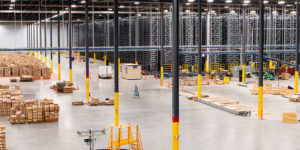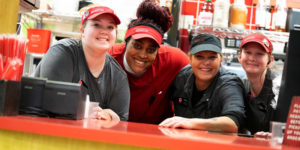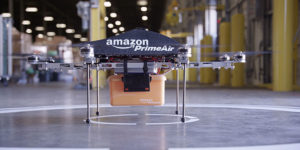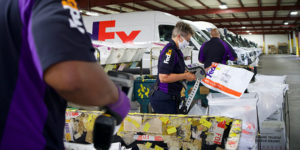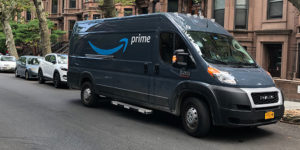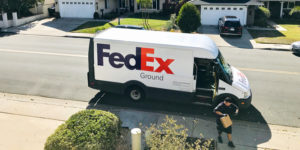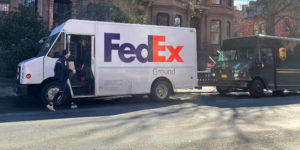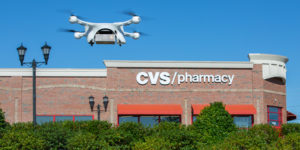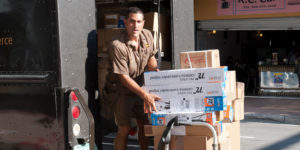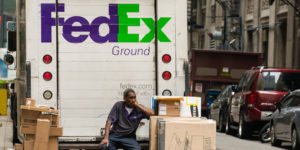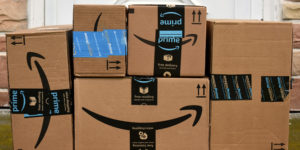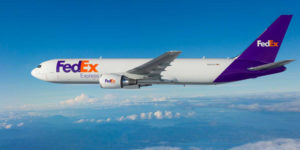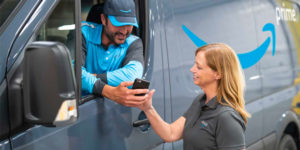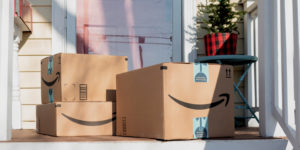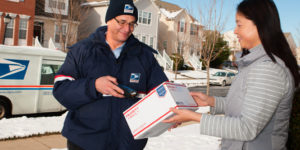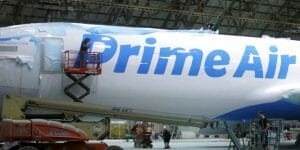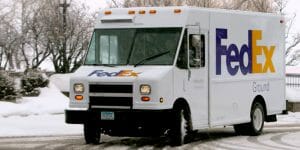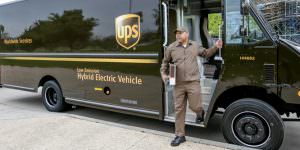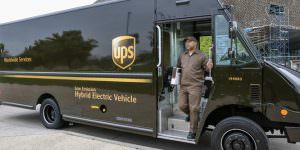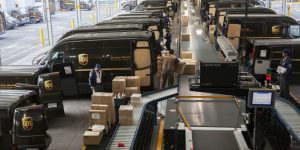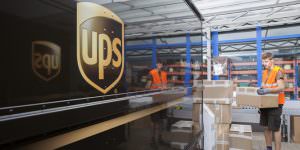United Parcel Service (UPS) News
Should SMBs trust Gap to handle their logistics?
Gap has formed a partnership with Ware2Go, a UPS-owned digital platform that matches merchants with on-demand available warehouse space and fulfillment services. Do you see more benefits than risks for smaller brands and retailers in outsourcing logistics and fulfillment to Gap and other retailers?
How much say should retailers have over an associate’s appearance?
Sheetz is reviewing its “smile policy” that forbids associates from having “missing, broken, or badly discolored teeth (unrelated to a disability)” following an exposé by Business Insider. Do you see some rationalization for Sheetz’s smile policy?
Is porch piracy a retailer responsibility?
Since November 23, Tom Ryan has been receiving weekly email warnings about package theft at his apartment building in New York City. The notes read, “The holidays are approaching and package thieves will be out in even fuller force than usual.” Should retailers hold consumers more accountable for stolen packages from doorsteps or apartment lobbies?
Will Amazon have to ground its drone program?
It was not so long ago that package delivery drones, specifically ones from Amazon.com, seemed poised to take flight as soon as the right regulatory bodies signed off. At present, however, the concept of package drop-off via drone is looking like it could be a dud. Do you see Amazon overcoming its obstacles with flying drone package delivery?
What does Russia’s war on Ukraine mean for U.S. retail?
Twelve days into Russia’s invasion of Ukraine, the most visible impact on U.S. retail appears to be brands suspending operations in Russia, local calls for boycotts of Russian vodka and a spike in gas prices. How should U.S. retail prepare for and respond to any fallout from Russia’s invasion of Ukraine?
Last-mile costs keep piling up
While the escalating costs of sending goods across the ocean have created headlines, continued rate hikes and fees from FedEx and UPS are more quietly continuing to increase the cost of last-mile delivery. Are the climbing rates and fees from shipping carriers a temporary or long-term problem for online sellers and e-commerce profitability?
UPS entry could even the same-day delivery playing field
UPS recently indicated that it is exploring a same-day delivery option at its Investor & Analyst Day event. How do you see same-day services — delivery and pickup — taking shape in retail over the next couple of years?
Do retailers have to catch up to Amazon’s logistics powerhouse?
Amazon.com has made significant progress over the last year in last-mile fulfillment with its vans crisscrossing neighborhoods with greater frequency. Where are Amazon’s largest logistics advantages as it builds out its internal network?
What’s next for mask mandates?
Mask compliance continues to frustrate retailers nearly one year into the pandemic and the vaccine rollout is creating more turbulence on selling floors. What new challenges does the rollout of vaccines and easing of restrictions around dining and other activities place on mask mandates at stores?
Will FedEx’s ShopRunner deal give retailers a better shot against Amazon?
FedEx last week announced that it had agreed to acquire ShopRunner, the Prime-like subscription service that offers two-day delivery from more than 100 retailers. What do you think is behind FedEx’s deal to acquire ShopRunner, and will it attract more merchants competing with Amazon to the program?
Can retailers avoid a late holiday delivery ‘apocalypse’?
With holiday shipping volumes typically 30 to 40 percent higher than at other times of the year, the pandemic-fueled acceleration of online purchases this season is already pushing distribution networks to the limit. What options do retailers have left to best manage expected shipping capacity constraints over the rest of the holiday season?
FAA gives permission for Amazon’s drones to take off
The FAA approved Amazon Prime Air as an official “air carrier” last week, enabling the company to get its commercial drone delivery program off the ground in the U.S. How quickly do you expect widespread drone deliveries in the U.S. to take off?
Can retailers mitigate holiday delivery fee spikes?
Retailers are expected to see blockbuster sales online this holiday with shoppers still nervous about in-store shopping, but a side effect may be escalating delivery costs. Is raising prices or increasing shipping fees the better option for retailers to offset likely higher delivery costs this holiday season?
Will COVID-19 quicken drone delivery’s flight to retail?
In recent years, articles on drones have been filled with complaints about their noise, spying capacity and threat to planes. In the last few months, they’ve been hailed as heroes amid the pandemic. Will increased activations during COVID-19 help speed up the adoption of drones for delivery and other retail purposes?
Will retailers pass along or eat COVID-19 shipping surcharges?
It’s not unusual for United Parcel Service or FedEx to tack-on surcharges for shipping during peak periods leading up to Christmas. Merchants do not, however, expect such charges in June. How do you expect retailers to address coronavirus-related delivery surcharges being placed on them by UPS and FedEx?
Are return rates out of control?
UPS expects a whopping 26 percent year-over-year surge in the number of returns it processes on January 2, National Returns Day. Those levels would represent the seventh consecutive record number of returns. Do you predict that return rates will continue to climb in the years ahead?
Why is Amazon banning FedEx ground delivery?
Starting Dec. 18, Amazon will begin temporarily restricting marketplace sellers from using FedEx’s ground services for Prime orders. What do you believe is the reason behind the restriction Amazon temporarily imposed on marketplace sellers from using FedEx’s ground delivery services for Prime?
Will Grinches steal Christmas from America’s front porch?
Consumers, retailers, third-party vendors and law enforcement are all seeking ways to cut down on package theft. Where do you see the biggest opportunities for retailers to cut losses due to stolen or misplaced deliveries?
Will becoming a UPS pickup/drop off point drive craft sales at Michaels?
Michaels announced that consumers can have packages shipped to them via UPS at more than 1,100 of the chain’s stores. They can also ship packages from the same locations. What are the keys for retailers looking to make third party pickup/drop off deals work?
Is FedEx smart to say goodbye to Amazon’s U.S. business?
After ending domestic express deliveries for Amazon.com in June, FedEx indicated last week it would be ending domestic ground deliveries, as well. What do you think drove FedEx’s decision to end its U.S. business with Amazon, and was it a smart move?
What does FedEx’s break with Amazon mean?
One analyst views FedEx’s decision not to renew its Express domestic contract with Amazon.com as “…a watershed moment for the parcel industry…” Does FedEx’s decision not to renew its Express U.S. domestic contract with Amazon point to better opportunities for other retailers?
Will delivering online orders seven days a week further transform retail ops?
FedEx will soon start delivering packages through its ground service seven days a week to more fully support booming e-commerce growth. Will seven-day residential delivery significantly raise the bar on same-day, next-day or other delivery expectations?
Amazon takes multi-pronged approach to owning the last mile
Forget drones for home deliveries of online orders. That was the consensus of a variety of industry experts at NRF, on conquering the challenges of the last mile. How do you see the battle between Amazon and the major carriers for last mile deliveries shaking out over the next several years?
Delivery drivers land on Santa’s Nice List
For more and more shoppers, the sales associate with timely advice or cashier with a smile is no longer their favorite retail helper in the purchasing process — it’s the delivery driver. Are the holiday thank you notes for delivery drivers a sign that third-party carriers are the optimal handlers of online delivery or that delivery should be brought in-house?
Why are holiday gift returns spiking before Christmas this year?
Revealing another wrinkle in the rise of online selling, the peak volume of holiday returns for the first time has arrived before Christmas, according to UPS. What do you see driving the trend toward continually-increasing and earlier holiday gift returns?
Will porch pirates ruin Christmas?
Many municipal police departments have reported a continued rise in the theft of packages from doorsteps and apartment building lobbies over the last few years as online selling expands. Which solutions make the most and least sense in battling household package theft?
Will rising costs throw a wrench in e-commerce operations?
Last week, e-commerce providers were hit by a double whammy of negative news. Will retailers be able to offset, or will they have to absorb, higher costs related to postal rates and warehousing?
UPS partners with retailers in launch of Groupon-like rewards program
UPS has launched the UPS My Choice Deals site offering retailers a platform to reach its more than 43 million UPS My Choice members with special deals and discounts. How would you rate the appeal of the UPS My Choice Deals site for consumers and for retailers?
Amazon moves closer to FedEx and UPS’s turf
Amazon.com plans to launch in “coming weeks” a new delivery service that will compete directly with FedEx and UPS, according to The Wall Street Journal. Does the launch and strategy around Shipping with Amazon (SWA) make sense for Amazon at this point?
Will late deliveries mess up Christmas?
Retailers know two things for certain. The first is that shoppers are going to place online orders up until the last minute for Christmas. The second is that any orders not delivered on time will be blamed on the retailer. Do you expect that the percentage of late deliveries will be higher this year than during past holidays?
Drone-to-hand delivery could become a thing
Retailers and tech developers have piloted many creative drone delivery solutions in recent years as they try to envision the future of the last mile. But while most have focused on how to get a package to a customer’s home, one startup is working on getting it directly into their hands. Do you see practical potential in drones making deliveries directly to consumers outside of the home?
What does all the noise around Amazon’s ‘Seller Flex’ program mean?
Amazon is testing a new delivery program called “Seller Flex” through which the e-commerce giant picks up packages from its third-party sellers and delivers the products to consumers. Could this be a major step toward Amazon building its own delivery network and taking more control over the last mile?
Will UPS’s Black Friday delivery surcharge have retailers seeing red?
Christmas is going to get a bit more expensive this year for retailers. UPS announced yesterday that it will add a surcharge to packages delivered during peak holiday shipping periods. How will UPS’s peak fees affect retailers during the Christmas selling season?
Can UPS get retailers to share in delivery costs?
United Parcel Service (UPS) wants retailers to get their shipping acts together and to pay more when they don’t, according to a Wall Street Journal report. What is the state of sales and shipping forecast tech in the retail industry today?
Is UPS’s Saturday announcement a sign of deliveries to come?
As e-commerce gains use, shipping companies are trying to keep up with the increased demand for reliable and convenient package delivery. Earlier this month, UPS announced that it would offer package delivery and pickup on Saturdays. Will Saturday delivery be a worthwhile investment for UPS?
Can UPS fly past Amazon in drone delivery?
UPS has begun testing a delivery truck that acts as a mobile drone base, Business Insider reported. The vehicle features a drone “nest” on the roof which houses a drone capable of flying for 30 minutes and carrying 10 pounds. Can UPS use drone technology to stave off incursions by others into last-mile logistics?
Will irrational shipping prices doom brick and mortar stores?
In 2015, just before Dan Gilmore, Editor-in-Chief, Supply Chain Digest, led a presentation on e-commerce at a supply chain forum at Penn State, a retail exec gave him an interesting take on omnichannel, which included this emphatic statement: “There is no free shipping!” Are the challenges at brick & mortar directly tied to unsustainable shipping price breaks for online deliveries?
Will Santa’s helpers deliver gifts in time for Christmas?
Many remember the Christmas of 2013 when many gifts ordered online never made it to American homes in time for the holiday. While no one is predicting a 2013 redux, one- to two-day delays being reported this holiday season are raising concerns. Where do you see the biggest problems when it comes to retailers and their shipping partners handling deliveries during the Christmas selling season?
Will drop-off points boost online sales?
After completing a successful test at nine locations in Chicago, UPS is expanding its Access Point smart locker package pick-up program to 300 new locations. Do you see drop-off points playing a large role in reducing the costs of online shipping?
Is Amazon acting like Walmart in the eighties?
Amazon’s investments in trucks, planes, cargo boats and drones continue to drive speculation on whether the company is building a full-scale delivery platform. But an RBC Capital Markets analyst is likening the moves to Walmart’s shift to tighten supply chain costs three decades ago. Does it make sense to compare Amazon’s recent logistics investments to Walmart’s supply chain initiatives in the eighties?
UPS is studying same-day delivery
UPS last week led an investment round of $28 million into Deliv, the delivery start-up, in part to learn more about the same-day model. Does it make sense for UPS and FedEx to get into same-day delivery?
Is Amazon preparing to dump FedEx and UPS?
It seems Amazon management thinks not only can it do a better job delivering its own packages, but those shipped by others as well. Does it make business sense for Amazon to handle all (or nearly all) of its deliveries?
FedEx ruins Christmas for some
Missed Christmas deliveries again made the headlines this holiday season. The culprit this time was FedEx. What lessons should retailers take from FedEx’s challenges meeting Christmas Eve delivery targets this year?
Are shipping companies ready for Christmas?
We still haven’t quite reached Halloween, but with Black Friday and Christmas on the horizon, the major U.S. shipping companies are taking steps to keep up with the anticipated seasonal workload. With added fulfillment centers, new strategies and public-facing tools, can shipping companies effectively handle holiday package delivery if we get another 2013-style winter?
UPS flexes its muscles on shipping terms
The Wall Street Journal reports that UPS recently began to approach retailers about changing the terms of their contracts. How do you expect e-commerce companies to react to the positions taken by Fedex and UPS? Will retailers absorb or pass on higher shipping costs to consumers this coming holiday season?
Retailers fulfill more holiday deliveries promises
Apparently with little help from Rudolph, last-minute Christmas packages arrived largely on time this year. According to a survey, only seven percent of packages ordered online did not arrive by their promised delivery date, compared with 12 percent in 2013. Will the improved on-time delivery performance this holiday encourage retailers to push the envelope on last-minute cut-off dates for 2015?
Will store pick-up alter the course of home delivery?
Designed to cut down on delivery stops, United Parcel Service announced last week it is launching a service that allows customers to pick up their packages at dry cleaners, convenience stores and pharmacies as well as UPS stores. Do you see wide consumer appeal for pick-up options for online purchases?
Can extra delivery temps save e-Christmas?
In efforts to avoid repeating the problems that plagued the 2013 holidays, both UPS and FedEx last week revealed plans to ramp up their hiring of seasonal employees to manage what’s expected to be another record year for holiday season package deliveries. What steps should retailers take externally with carriers and internally to ensure timely holiday deliveries?
Amazon widens its moat
Last Christmas Eve, Amazon received a patent for “anticipatory package shipping.” This combined with other actions Amazon is pursuing indicates how the online giant is working to widen the already sizable “moat” separating it from the competition. What do you see as the net effect of Amazon taking on more of its own logistics?
The lure of free shipping
According to a UPS study, four out of five consumers feel that free shipping is an important factor when making a purchase online. Ninety-three percent have taken action — including bundling more items and choosing slower delivery — to qualify for free shipping. What guidelines would you suggest around using “free shipping” as an incentive for online shoppers?
© 2025 RetailWire · Privacy Policy · Terms & Conditions · Community Guidelines · Sitemap · Do Not Sell My Data

